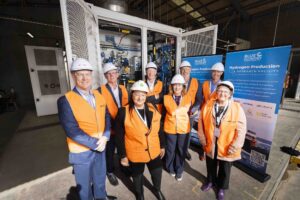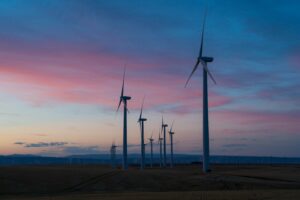Gas customers in the ACT face higher bills in the next five years after the energy regulator allowed a network request to extract more money from its customers before many of them switch to alternative technologies such as renewables.
EvoEnergy, which owns and operates the distributed gas network and supplies more than 150,000 customers in the ACT and neighbouring Queanbeyan in NSW, has won regulatory approval to accelerate the depreciation on its gas network, and pass on the cost to consumers.
It wants to do this because it expects many of its consumers to stop using gas, partly because of cheaper alternatives and partly because of a new ACT government mandate to reach zero emissions by 2045, which means no use of a fossil fuel such as gas.
The local government is also banning the connection of gas pipelines to new suburbs, and any new gas connections in the ACT from 2023. As a result of this government policy and technology switch to cheaper renewables, EvoEnergy has shortened the anticipated lifetime of its long term assets to 50 years from 80 years, and to 30 years from 50 years for some newer assets.
But it says the lifetime of the assets could be even shorter – as little as 15 years – given the life-cycle of most household appliances. “An economic life of 50 to 80 years, based on the technical life of modern plastics and steel, is simply not a reasonable estimate,” it says.
The Australian Energy Regulator argues that the price increases are fair because it protects those that will remain on the gas grid from even higher bills down the track. (The potential write-down of such stranded assets is rarely discussed, but surely must be in coming years, presenting another regulator headache).
“As consumers make the switch to renewable energy under the ACT Government’s climate change strategy it’s expected there will be less demand for gas in the ACT,” AER chair Clare Savage said in a statement over the weekend.
“This means any remaining consumers who can’t or don’t yet choose renewable energy services are at risk of future bill increases because less homes and businesses can share the cost of maintaining gas network services.
“Faster depreciation means that some of the costs for gas network services can be recovered from more consumers today, compared to a smaller number of consumers in the future.”
EvoEnergy expects that the number of customers and demand for gas could fall by nearly one quarter in the next five years. The AER thinks there will be fewer defections, and predicts only a fall in demand of 9.8 per cent.
“We consider that our alternative demand forecast is better than Evoenergy’s forecast in terms of accuracy and represents a more appropriate allocation of demand risk to consumers,” it said.
Still, it approved an increase in the network component of consumer bills that will addd $14 a year to households and $127 a year to business, around half the bill increase that would have occurred had it accepted EvoEnergy’s forecasts. (Network charges will actually fall in the coming year, but then rise in the four years of the regulatory period that follow).
The increase in bills is not huge, but the regulatory signal is important, as gas networks across the country are facing the same issue of stranded assets and grid defections that had been expected of the electricity networks.
In the case of electricity networks, the slow rollout of household batteries, and the realisation that the cheapest back-up is the grid, along with the rollout of programs such as virtual power plants, that will ultimately include electric vehicles and which can deliver added revenues to the grid, has caused less defection than thought.
The gas networks, however, have a problem. In a country aiming for net-zero emissions, and the alternatives currently being pursued, biogas and hydrogen, may only offer partial solutions and may not be cost competitive.
“The future of natural gas is a live issue, particularly as renewable energy becomes cheaper and is increasingly becoming the choice of consumers,” the AER notes.
EvoEnergy noted that none of the avenues it had been pursuing for “renewable gas” – such as biogas and green hydrogen – were strong enough yet to present to regulators for spending approval. They both require significant investment in new infrastructure.
It’s ironic, though. One of the country’s biggest electricity companies, Transgrid, had sought permission from the Australian Energy Market Commission, the main rule-maker, to fast forward the return on investment (i.e. higher network charges) to advance the case for the proposed new transmission link from South Australia to NSW.
The AEMC said no. So now we have a case where an incumbent gas asset owner can fast track returns from consumers because it is threatened by the switch to renewables, but another network operator is not allowed to do the same when it proposes an investment that will help fast track the switch away from incumbent gas to new renewables.
That’s what happens when the rules of the market do not allow the regulators and rule-makers to consider environmental or climate factors in their decision making. It’s been the single biggest failing of the National Electricity Market and one of the prime reasons why the sector is in a mess. It’s time it changed.










